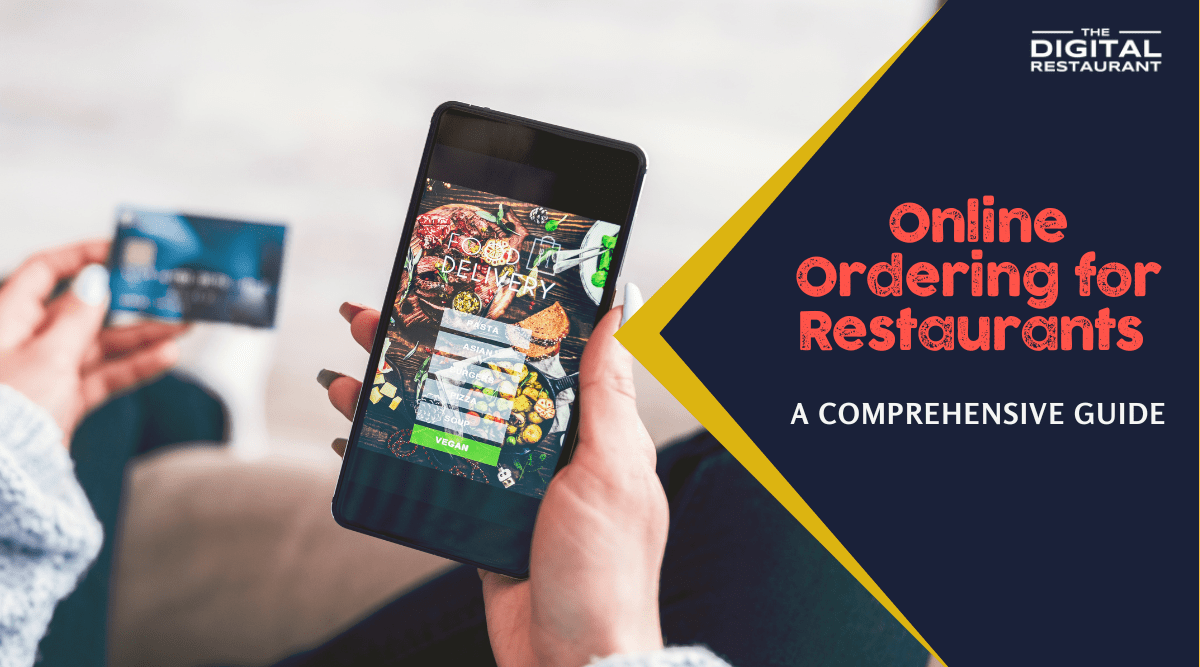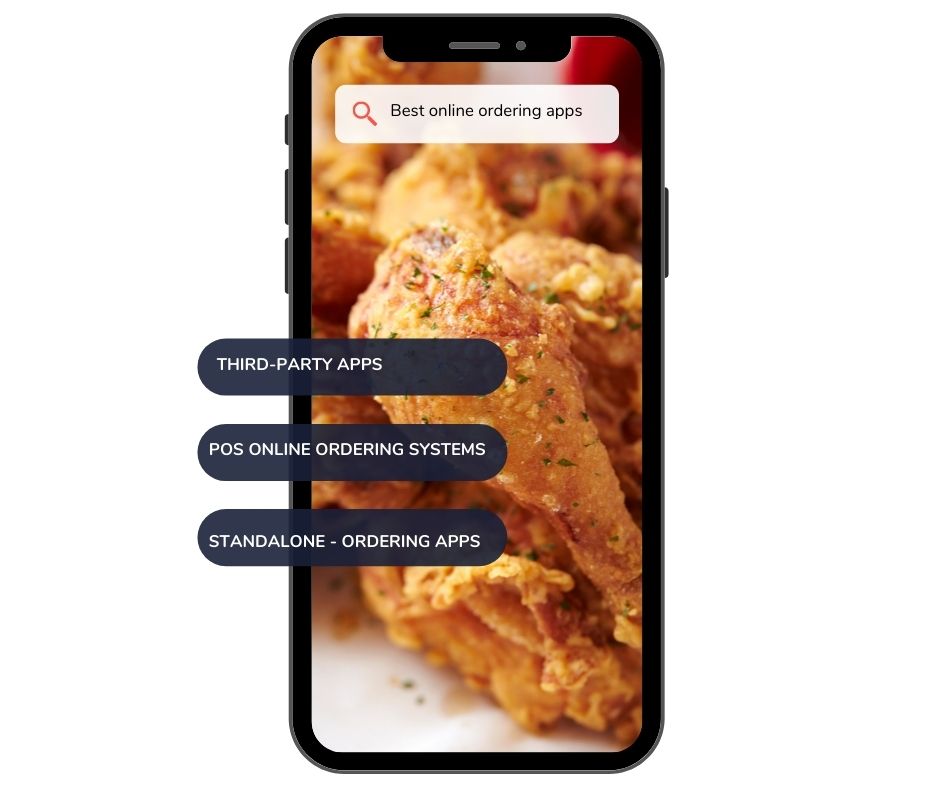Online ordering is no longer a nice-to-have option for restaurants, but rather a must for any business that hopes to thrive and operate in the post-pandemic era. As a result of the huge demand for online ordering systems, restaurants have been inundated with a multitude of options;
the real question then is which one would suit your restaurant’s needs the most.
The online delivery industry generates massive revenue opportunities; the numbers don’t lie.
- As per Raydiant – 40% of restaurant operators would not be able to keep their businesses in the covid-19 pandemic without third-party delivery services.
- By 2024, online food delivery services are projected to be a $32 billion industry.
- Online food delivery is here to stay; in 2021, 53% of survey respondents – and 64% of millennial respondents – say that food delivery and takeout are “essential to the way they live.”
- The pandemic was a big influencer in changing customers’ dining and ordering habits. 68% of consumers say they’re more likely to order takeout in 2021 than they were pre-pandemic.
What is the best online ordering system for my restaurant?
When we talk about online ordering systems, most restaurant owners immediately think of popular third-party apps like Grubhub and Ubereats. They are more likely to select these apps because they are popular. Although they each have their own advantages, it is critical to evaluate the other platforms available in order to make an informed decision that will benefit the business in the long run.
In this article, we will go over the various types of online ordering software used in the restaurant industry, as well as the benefits and drawbacks of each. We will thoroughly evaluate each type so you can make the best decision for your restaurant.
Let’s go >>>
There are three main types of restaurant online ordering systems to consider:
- Third-party online ordering & delivery apps
- Point-of-sale (POS) online ordering software
- Standalone online ordering system
1. Third-Party Online Ordering & Delivery Apps:
Third-party ordering systems are any external platforms or apps that provide an online ordering menu and the orders are sent to the restaurant. Typically, the restaurant has to sign an agreement where the menu of the restaurant is set up on the 3rd party platform and the customer place the order then the order is sent to the restaurant by fax, phone, email or tablet.
Here are some examples of third-party online food delivery apps :
| System | Features |
| DoorDash |
Went public in 2020. As of 2021, it had the highest market share in the US at 57% (Source, Business of Apps). Integrates with leading POS systems and other systems. Delivery commission ranges from 15-30% and 6% pick-up commission (source, Doordash) |
| GrubHub/Seamless |
Seamless launched in 1999 and Grubhub in 2004 and they merged in 2013. Their current market share in the US is 16% (Source, Business of Apps) It offers tech and POS integrations. Costs include a marketing commission and 5% to 20% of each order, depending on the Grubhub pricing package you choose. (source, Grubhub) |
| UberEATS |
Was launched by Uber in 2014 in Los Angeles. The current market share in the US is 26% (Source, Business of Apps) Integrates with well-known POS systems in the restaurant industry. An average of 30% commission fee on orders. |
| Postmates |
Was founded in 2012 in San Francisco. The current market share in the US is 8% (Source, Business of Apps) Acquired by Uber for 2.65 Billion in 2020. Integrates with well-known POS systems. |
| Other Systems: | Caviar, Seamless, Deliveroo, FoodPanda and BiteSquad. |
Advantages of Third Party Online Ordering System
- Increase your reach by tapping into their massive market in major cities.
- Most apps have fleets of drivers, which reduces delivery times.
- Easy to use apps.
Disadvantages of Third Party Online Ordering Apps
- You lose direct interactions with your customers as third-party apps become the intermediary between you and your customers.
Any mistakes made by the third-party apps may be blamed on you by the customers. Service Management Group found that 35% of at-home diners who had a problem with a third-party delivery service ultimately blamed the restaurant. - You lose all marketing intel, as customers’ emails and contacts are only saved on third-party apps.
It makes it difficult to track where your marketing data, where your sales come from, how your new customers find you and which social media platforms they use.
2. Point of Sale (POS) Online Ordering Software
What is a Point of Sale Online Ordering and how does it work?
This is a built-in online ordering software that allows restaurants to take orders, process payments and make deliveries, without involving any third-party software.
These are some popular Point of Sale online ordering software for restaurants in 2022
| System | Features |
| Toast |
Toast, Inc. is a cloud-based restaurant software company based in Boston, Massachusetts. The company provides a restaurant management and point of sale (POS) system built on the Android operating system. Toast has three online ordering platforms for restaurants:
|
| TouchBistro |
Founded in 2010. POS system developed exclusively for iPad. Has extra features like Payment Processing, Tableside Ordering, |
| Square |
Founded in 2009. Features include Customer Management, Production Management, Nutrition & Ingredient Labels. With Square Online, you can accept online orders, integrate with an eCommerce partner, or work with a developer to integrate with Orders API. When you start accepting online orders, you can track and manage multiple fulfillment types from both the online Square Dashboard and Square POS app. |
| Revel Systems |
Was founded in 2010, currently worth $300 Million. iPad-based point of sale system. It is now majority-owned by a private equity firm. |
Advantages of POS Online Ordering Systems
- Better and faster automation as they’re easier to link to your accounting and kitchen software.
- Customers’ data belongs and is controlled by you and can be used for email and SMS marketing.
- Processing fees and costs are lower than third-party apps.
Disadvantages of POS Online Ordering Systems
- High subscription fees
- They may not be as easy to use as third-party apps which means training may be required for staff.
- Some POS systems may have limited support which may make it harder to fix issues instantly.
- You have to build your own audience from scratch.
3. Standalone Online Ordering System
A standalone online ordering system is often referred to “commission-free” online ordering system, is an online ordering system in which orders are placed on restuarant website and sent directly to the restuarant without the use of an intermediary. Restaurants can choose between custom-built online ordering systems or one-time purchase systems that are uploaded and integrated into the restaurant’s online ordering hardware.
| System | Features |
| Zuppler |
It has no setup fees, no monthly fees, just pay per order. Provides a fully branded online food ordering experience. Integrates with POS, payment, loyalty, and delivery services. |
| Opendining/Paytronix |
Acquired by Paytronix in 2019. Rebranded as Paytronix. Features included contactless support, employee dining, subscriptions etc. |
| Menufy |
Founded in 2009, Menufy offers mobile and online meal ordering. They offer no monthly online ordering fees (source, Menufy) 12.5% delivery in the US. |
Advantages of standalone online ordering System
- Restaurants have full control of the order from initial order to delivery and therefore can be very low processing fees
- Sync your systems with other systems in your restaurant for better reporting.
- Give your customers numerous payment options
Disadvantages of standalone online ordering System
- Delivery is a large expense that requires a lot of time and resources to set up and manage
- Initial set-up and installation costs are higher.
- May require training as each independent system is different.
Which is the best online food ordering app then?
Here are the critical factors to consider to chosse the best online food ordering app for your restaurant:
- Commissions and Costs
Are you ok with giving up 20-30% commissions on each order with third-party online ordering sytems? Does your profit margins allow for giving away commissions? Are you focused on branding yourself as affordable, and are avoiding extra costs for your customers? Then POS online system and standalone systems will be a better option as these have flat monthly fees and do not charge per order commissions that can add up significantly each month. - Seemless Operations & POS Integration
Want a smooth order flow and efficient operations? POS integrations are supported by each of the three types of online ordering systems, but their complexity varies. POS online ordering solutions are the optimal choice because the POS software is built to operate effectively with the host POS. The standalone online ordering systems enable interfaces with the POS system, but they are restricted by the open API access permitted by the POS and the capabilities of the online ordering system. Typically, the third-party online ordering platforms offer connectivity with POS systems via third-party POS integration software, such as Chowly and Itsacheckmate, for an additional fee. - Marketing and Promotions
Do you want to build and have access to your customer database? If you want to remarket to your customers through email marketing and/or SMS marketing, POS online ordering sytem and standalone systems will serve you better. Typically, third-party online ordering systems do not share customer information with restaurants and manage marketing to customers directly. - Delivery Staffing
Are you able to take on the costs of managing a fleet of deliveries including overhead costs such as insurance? Do you prioritize how your food gets delivered as much as how it’s made? Does your food require special handling instructions that require trained staff? Can your budget afford delivery staff? If your budget doesn’t allow for these costs, third-party delivery systems provide a good option to offer delivery for your customers by paying a commision for the service. - Customer Issues & Brand Reputation
Are you concerned with handling customer issues directly and online reputation? With third-party online ordering sytems, customer satisfaction is a hit or miss which may potentially affect your restaurant brand reputation. If you want total control of your food and service quality end-to-end, POS online ordering or stand-alone online ordering is the way to go.
Summary
Numerous factors must be considered in order to select the optimal online ordering system for your business. We believe that many systems can coexist, but you should prioritize developing your core technology and service competence. This can be a zero-commission POS-based online ordering system or a stand-alone ordering system if POS integration is easily possible. Signing on to third-party online ordering systems should be carefully considered for their impact on overall profitability due to high commissions, limited customer information, and impact to brand reputation.
Still unsure about which online delivery service to use for your restaurant?
We’ve assisted numerous restaurants in selecting and implementing the best online ordering and delivery systems based on their business goals.
Speak with our team about the best online ordering option for your restaurant.
Next Steps:
- Schedule a free 30-minute consultation with one of our marketing experts to develop a customized marketing strategy for your restaurant.
Don’t let your competitors claim a bigger slice of the market. Take action today and watch your restaurant’s success soar!


Leave a Reply